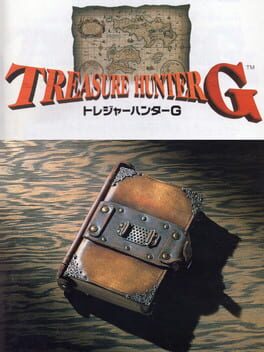

Brothers Red and Blue G. decide to leave their idyllic village in search of their long lost father, who left the kids years ago to go treasure hunting. Unfortunately, as soon as they begin their quest, they become entangled with a mysterious girl on the run from evil monsters who holds the key to the resurrection of a great demon. Now its up to the brothers to save the world if they ever want to find their father. Treasure Hunter G is a top-down RPG in which you control your party of four characters as they explore the fantasy/sci-fi game world in search for quests and grinding their stats while the plot advances. The game is divided in a world-map screen, a top-down "town" mode and a turn-based fight mode in which the characters are taken to generic tiled top-down arenas in which they select each character and move or attack depending on their action points. Enemies can be seen on the map instead of jumping at you at random intervals, and you can freely decide whether to engage them or simply circle them around. The game uses a combination of hand-drawn sprites and CGI pre-rendered one (mostly for the main characters) with a distinct cute or Super Deformed design (as usual for most console RPGs).
Reviews View More
On the other hand, its story and characters are hardly memorable, despite the amount of cutscenes and despite some truly strange moments - and, given their myriad variations in layouts, encounters are potentially hit or miss (with boss fights leaning towards the latter end).
Unfortunately by the backhalf everything but Red's Sword seems underpowered. Ranged weapons miss constantly, or do miniscule damage, and magic spells from a decent range cost a lot of SP. Enemies litter the entire field red and have attacks that push you away making getting in range and staying there a chore. No escape button, either. It's going to throw a lot of these battles at you.
It's not hard, I never died in my playthrough, it's just tedious, and the story (or at least the fan translation I had) stops being interesting by this point.
I reccomend trying it as it's first half is great, but I don't blame anyone for shelving it after that.
